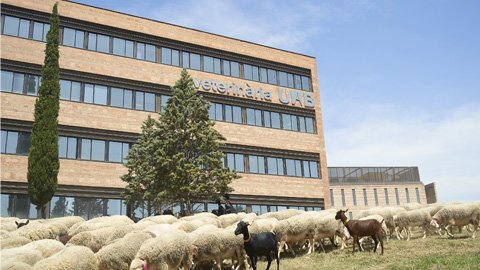The UAB to become Barcelona Zoo Foundation's BioBank headquarters
The tissue and gamete bank of the Faculty of Veterinary Medicine will be one of the headquarters of the BioBank for the conservation and storage of animal cells and tissues launched by the Barcelona Zoo Foundation, which aims to become a leading centre in this field in southern Europe. The objective of this project, the first of its kind in Spain, is to conserve biodiversity through the preservation of animal biomaterial.

The Barcelona Zoo Foundation recently announced the launch and coordination of the conservation BioBank, a comprehensive project created to preserve biomaterial and viable cells, and to facilitate the study of animals through less invasive methods, giving priority to research aimed at the conservation of endangered species, now and in the future.
The BioBank will have two locations: one at the gamete and tissue bank of the Universitat Autònoma de Barcelona (UAB) and another at the CryoZoo cell line bank of the Institute of Evolutionary Biology (IBE). It has been created with a clearly international vocation and aims to become a leading centre in Europe, particularly in southern Europe, which also houses similar institutions such as the Iberian Association of Zoos and Aquariums (AIZA), as well as aspiring to have an important role in global initiatives such as the World Biobank for Conservation.
According to the Barcelona Zoo Foundation, the initiative was launched to cover the need of providing a sustainable source of samples for the genetic and genome research of animal species. The biobank seeks efficiently to standardise the animal cells and tissues stored until now, particularly those of endangered species, stemming not only from the Barcelona Zoo, but also from other areas. This would facilitate making a responsible and sustainable use of the samples for a wide array of applications, thus contributing to improving fundamental research and the conservation of endangered species.
The lines of work at the BioBank focus on the conservation of all types of animal tissue, with emphasis put on neural and reproductive cells; the creation of viable cell lines and of stem cell lines; the use of in vitro fertilisation technology; the histology or study of the microscopic structure of biological material, and cytometry for the study of blood cells; and, finally, the complete molecular characterisation of the most endangered species. It thus aims to contribute to the preservation of species through informed management, at the molecular, ecological and population levels.
The UAB Tissue and Gamete Bank
In 2003, the UAB and the Barcelona Zoo Foundation began an altruistic collaboration for the conservation of animal tissues for their later use in different research studies. The BioBank includes this legacy and aims to regularise and standardise this process, and work towards adding tissues from many other sources other than the Barcelona Zoo. The person directing the BioBark at the UAB is Manel López Béjar, researcher at the Department of Animal Health and Anatomy. The coordinator of the tissue bank is Annaïs Carbajal, also researcher at the UAB.
The bank includes over 11,000 tissue samples from 284 different species, of which 3,000 come from the Barcelona Zoo itself. It also collects 30 different types of tissues, such as plasma, serum, feces, urine, skin, feathers, saliva, testicles, ovaries, scales, whalebones, blubber, etc., which are stored in nitrogen tanks at -20ºC.
The IBE headquarters forms part of an innovative work area focused on cell line research and aims to be the European equivalent of San Diego’s Frozen Zoo, created in 1964 and internationally renowned for its work in this field.